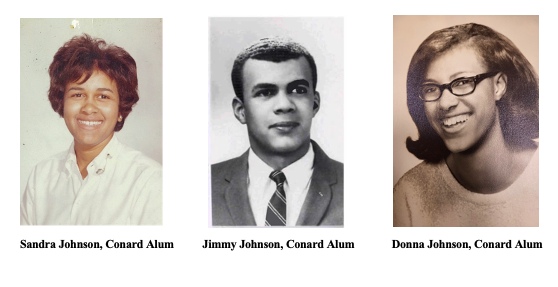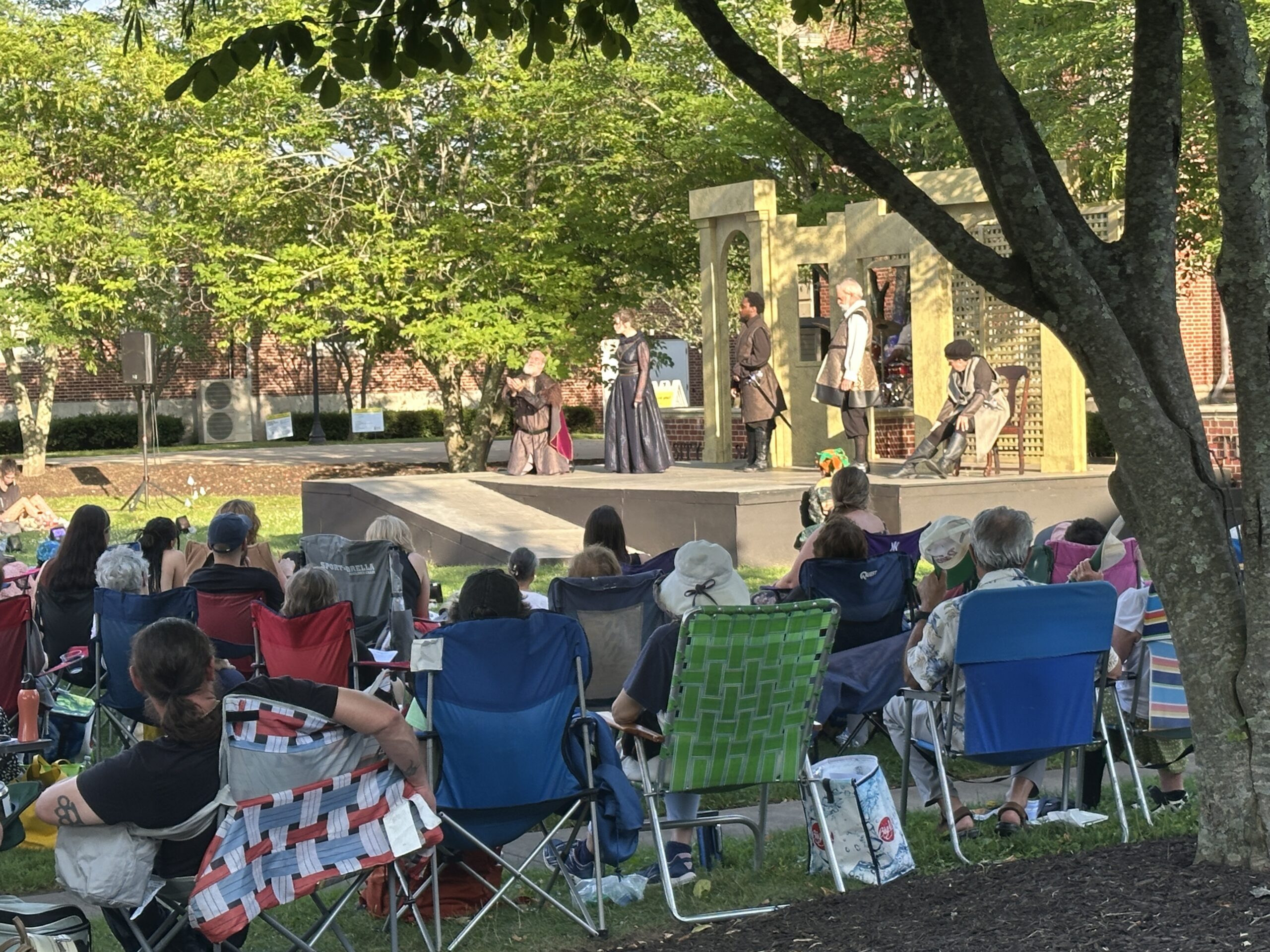Op-Ed: Black History Month Is a Time for Reflection on the Past and Personal Discovery for All

Audio By Carbonatix

Courtesy photos
Thoughts about Black History Month. This essay is dedicated to Sandra V. Johnson, Ph.D, former Chair, State of Michigan Board of Psychology.
By James A. Johnson
“My race needs no special defense, for the past history of them in this country proves them to be equal of any people anywhere. All they need is an equal chance in the battle of life.” – Robert Smalls, U.S. Congressman, 1895
Black History Month is used as a time to reflect into the past to discover how far we have advanced and how much further we must go. It is also a time for personal discovery for both Blacks and whites to discover how they fit into the narrative of Black history.
When the first abducted Africans landed on America’s shores in 1619, freedom became their watchword. Freedom from the atrocities of rape, beatings, family separations, lynching, and segregation. Freedom from political disenfranchisement, redlining, police brutality, and racial hatred. For more than five centuries African Americans are still seeking real freedom and full equality.
There is no mystery in being Black in America. Being Black carries a badge of racial oppression that is fixed at birth and continues to the grave. This is the practice of racism in the most color-conscious nation in the world. A Black person lives every day with the acute awareness of his or her blackness. It does not matter how well educated, successful or attractive one may be, he or she cannot escape racism.
Critical Race Theory
Critical Race Theory, according to Professor Kimberly Crenshaw of Columbia Law School, is tracing and analyzing the ways that race is produced and how racial inequality is facilitated and racism operates in America.
Critical Race Theory is a body of scholarship that faces America’s brutal racial history, recognizes the parts of that history that remain unchanged, and works toward changing the rest. Conservatives are waging an all-out war on affirmative action in higher education cases, Students for Fair Admissions v. Harvard University and Students for Fair Admissions v. University of North Carolina before the U.S. Supreme Court. The decision is expected in June 2023. The lead attorney representing Harvard is fellow alum Seth Waxman.
Victor Ray in his book, “On Critical Race Theory,” states that race is a political and social category, not a biological one. Even former President Bill Clinton said, “In genetic terms, all human beings regardless of race, are more than 99.9 percent the same.” Franz Boas of Columbia University, the founder of modern anthropology argued that culture, not race, explained the differences between racial groups.
Case in point – some of my white friends and acquaintances inform me, unsolicited, “I do not think of you as Black.” My acquaintances believe they are complimenting me, but in fact, the statement is an insult. However, I am not greatly offended because society does not permit them to come in contact with Black people like me. The reason is that all of my friends, classmates, teammates, and neighbors until I was 18 years old were white. Keep in mind one acquires the speech, mannerisms, and values of the environment both inside and outside one’s home.
Again, I refer to Dr. Victor Ray, Professor at University of Iowa, who argues that racism is structural. Structural racism is consummated through the control of the court system, police departments, banks, schools and real estate offices on a scale that vastly exceeds individual racism. Structural racism is a political system that combines ideas about race with unequal access to social and material resources. It is powerful because once discrimination is built into a system and that system comes to be seen as legitimate, it obscures the roots of inequality.
In isolation individual racism is relatively inconsequential. But, when racist people are empowered such as employers, judges, lawyers, physicians, real estate brokers, banks and teachers, the cumulative effect is the denial of resources and the bolstering of structural and institutional racism. The reason I set out all of the above is to enlighten the reader that when biased processes are built into policy rules, structural racism compels even people without individual animus to participate. For example, a white homeowner who refuses sell to a Black family, thereby keeping the neighborhood white, reinforces residential segregation. Or, a real estate agent tells another agent – the boss does not want us to show homes in that neighborhood to those people.
Race
Race the biological distinction is the most durable, singular social preoccupation of the United States throughout its history. Race is the constitutional Continental Divide. The litany of American constitutional race relations is so familiar that even the most casual high school history student can glean America’s attitude toward race. For example, the mention of a fraction (“3/5”), a number (“Fourteenth”), a first name (“Dred”), a surname (“Plessy”), a year (“1954”) or full name (“Trayvon Martin,” “George Floyd,” and “Breonna Taylor”) connotes America’s attitude toward race.
According to late Derrick Bell, Professor of Law at Harvard: “Black people are the magical faces at the bottom of society’s well. Even the poorest whites, those who must live their lives only a few levels above, gain their self-esteem by gazing down on us. Surely, they must know that their deliverance depends on letting down their ropes. Only by working together is escape possible. Over time, many reach out, but most simply watch, mesmerized into maintaining their unspoken commitment to keeping us where we are, at whatever cost to them or to us.” – Derrick Bell, “Faces at the Bottom of the Well – The Permanence of Racism,” 1992
Equality
Equality means each individual or group receives the same resources or opportunities. Black people on average have 22 cents for every dollar of white family wealth, according to the St. Louis Federal Reserve’s Institute for Economic Equity. People of color have been locked out of the economic process. Minority owned businesses have always been at the back of the finance and lending line. This has been exacerbated by the COVID pandemic.
The Conversation
According to Robert Livingston, a Harvard social psychologist in his book, “The Conversation,” most white people believe that systemic racism against Black people no longer exists. If you consider the election and re-election of Barak Obama, U.S. Attorney General Eric Holder, Oprah Winfrey, and the confirmation of Ketani Brown Jackson to the U.S. Supreme Court – how can racism exist?
The election and appointment of Black individuals to high positions, however, does not address the issue of institutional racism. This is not evidence of how the average Black person is faring. What affects Black people as a whole is determined by institutions and systems we have in place.
Robert Livingston addresses three simple but profound questions: What is racism? Why should everyone be more concerned about? What can we do to eradicate it?
Despite undeniable progress African-Americans are not insulated from the incidents of racial discrimination. African Americans in many careers feel even their lives are threatened because of their color. Case in point are the homicides in 2020 of unarmed George Floyd (“I can’t breathe”), Rayshard Brooks of Atlanta, and Jason Blake of Kenosha, Wisconsin.
George Floyd’s murder and his last three words, “I CAN’T BREATHE,” summarized the feelings of African Americans. The restriction of breath comes by broken promises, inequality, egregious discrimination, and at times, undeniably inhumane treatment. To quote Dr. Martin Luther King, “America has given the Negro people a bad check, a check which has come back marked ‘insufficient funds.’” America has attempted with limited success and varying degrees of sincerity to atone its original sin of slavery under the guise of Diversity, Equity, and Inclusion programs. What should be done is to mentor, develop, and invest in the minorities employed and recruited in corporations and law firms.
Homeownership
Today Black homeownership is worse than when it was legal to discriminate. In 2018, 72% of white households owned a home. Black homeownership was at 42%, Asian 57%, and 48% of Hispanic American households were homeowners.
The reasons for these racial disparities are decades long housing segregation, a systemic denial of loans or insurance in predominately minority areas and a personal income gap. In addition, a historically limited ability of Black parents to leave their families an inheritance has contributed to the disparity. It is a vicious cycle. It is not a generation issue, but an intergeneration issue. Whites in general, but not all, are much more knowledgeable about homeownership. It is something that white families teach their children from generation to generation. Homeownership is not taught in the Black community.
Diversity Inclusion
Today corporations and firms talk about diversity, equity, and inclusion. The test is to examine the resources dedicated to it above the hiring of someone within their ranks to lead those initiatives. This is the real test. All the mandatory unconscious bias training in the world will not help that much. It must be accompanied by a holistic, systems-change. This will create a culture of inclusion within the organization. Black professionals in these positions should be supported, groomed and developed for higher levels of responsibility. Those whites who allege that Blacks are guilty of reverse discrimination when they advocate that institutions must create and reserve opportunities for Blacks are not forward-thinking people. These opportunities are to redress persistent racial oppression for more than two centuries.
Black Lives Matter
Affirmative Action policies that have been in place for decades has helped but are insufficient. It appears that it always takes a major event for white America to throw us a bone or two in an effort to keep us quiet. The nationwide protest by the killings of Patrick Lyoya, George Floyd, Ahmaud Arbery, Michael Brown, Trayvon Martin, and Breonna Taylor demonstrated the plight of African Americans. With these public cases, America got a front row seat into the complexities of race and police relations. It also underscored the grinding slow pace of progress despite the civil rights gains of the past. Yet, in the 21st century minorities still have to shout: “Black Lives Matter.” Every police killing of an unarmed black man, woman, or child is a stain on our nation’s conscious. Millennial organizations have formed to continue the push for racial justice.
Anti-lynching Bill
In March 2022, President Joe Biden signed the Emmett Till Antilynching Act – the bill named for the 14-year-old Black boy from Chicago who was murdered in Mississippi in 1955. The bill was introduced in Congress 200 times since 1900 and each time it failed. According to Tuskegee University over 4,000 African Americans were lynched between 1882 and 1968. The killers were never tried or punished. Congress failed these people and took 201 times to declare on behalf of the nation that Black lives mattered. Lynching is now a federal crime.
The Spoken Word
The Black community and other communities of color do not need handouts or charity. They need access to capital resources that will help an entrepreneurial class grow in minority communities. Corporations and firms can start by creating a culture of listening and learning in the workplace. Building a cultural foundation requires getting comfortable with being uncomfortable. This will eventually improve working relationships. Take the advice of Atticus Finch in the 1962 movie “To Kill a Mockingbird”: “You never really understand a person … until you climb inside of his skin and walk around in it.” Words have power. We use words every day to communicate, to bond, to teach and to express an opinion. Words can hurt but also can be used as medicine – to heal a wound or create a closer relationship. Words have the capacity to make change. Words can be used as seeds and can sow equality and life-sustaining paths for others to follow. As you reread Black History Month consider what seeds to plant today and tomorrow.
About the Author:
James A. Johnson is a former captain of the Conard High School basketball team and a two-time All-CCIL selection. Today he is an accomplished trial lawyer concentrating in serious personal injury, sports and entertainment law, insurance coverage under the Commercial General Liability (CGL) policy, and federal criminal defense. Jim is an active member of the Massachusetts, Michigan, Texas, and Federal Court Bars. He can be reached at www.JamesAJohnsonEsq.com
We-Ha.com will accept Op-Ed submissions from members of the community. We reserve the right to edit all submitted content.
Like what you see here? Click here to subscribe to We-Ha’s newsletter so you’ll always be in the know about what’s happening in West Hartford! Click the blue button below to become a supporter of We-Ha.com and our efforts to continue producing quality journalism.



